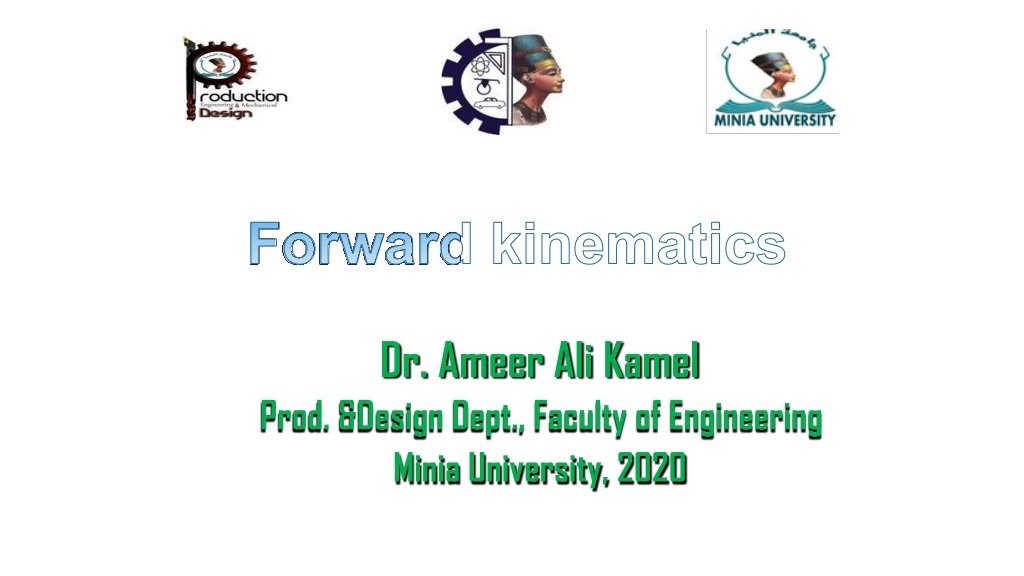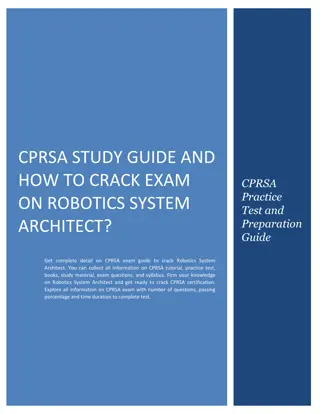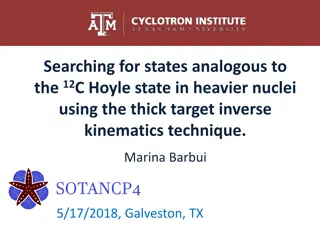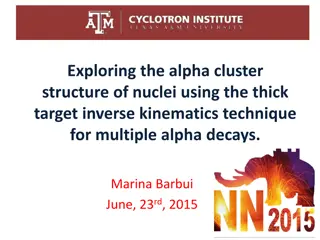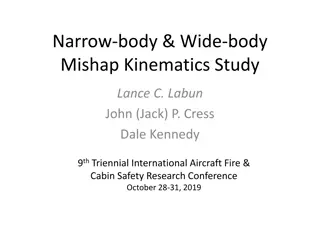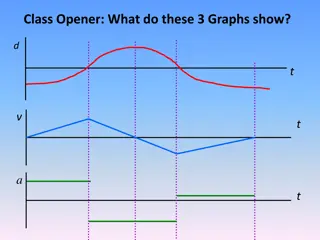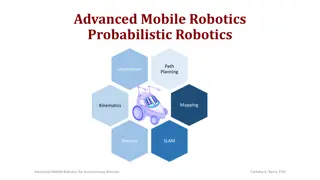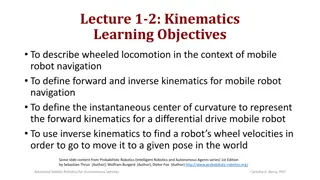Understanding Kinematics in Robotics: Fundamentals and Applications
Explore the fundamentals of kinematics in robotics including manipulator structures, joints, end effectors, and forward kinematics. Learn about link lengths, twists, joint angles, and the importance of the right-hand rule in determining motion. Discover real-life examples showcasing kinematic principles in action.
Download Presentation

Please find below an Image/Link to download the presentation.
The content on the website is provided AS IS for your information and personal use only. It may not be sold, licensed, or shared on other websites without obtaining consent from the author. Download presentation by click this link. If you encounter any issues during the download, it is possible that the publisher has removed the file from their server.
E N D
Presentation Transcript
Dr. Ameer Ali Kamel Prod. &Design Dept., Faculty of Engineering MiniaUniversity, 2020
A manipulator may be thought of as a set of bodies connected in a chain by joints. These bodies are called links. Joints form a connection between a neighboring pair of links. A link is considered only as a rigid body that defines the relationship between manipulator . two neighboring joint axes of a
End Effector Li Lin nks ks Joints 2 DOF s Robot Basis
Kinematics without regard to kinematics, acceleration, variables (with respect to time or any other variables). Hence, the study of the kinematics of manipulators refers to all the geometrical and time-based properties of the motion. is the science of motion that treats the subject the forces that cause it. Within the science of studies the position, all higher order derivatives of the position one and the velocity, the
For The any two axes in 3-space, relation between two coordinates frames has 6 parameters 3 translation and 3 rational distance is measured along a line that is mutually perpendicular to both axes is called the link length The second parameter needed to define the relative location of the two axes is called the link twist. One parameter of interconnection has to do with the distance along this common axis from one link to the next is called the link offset. The second parameter describes the amount of rotation about this common axis between one link and its neighbor. This is called the joint angle The
Forward Kinematics Determines where the robot hand is [all joints variables are known] Given : length of each link, angle of each joint Required : .Position of any point [its (x, y, z) coordinates] Inverse Kinematics Calculate what each joints variables is [ If we desire that hand be located] Given : length of each link, position of some points on the robot Required : .The angles of each joint needed to obtain that position
Forward Kinematics GeometricApproach This method is suitable for simple examples (like 2-D condition) But for robots with more links and this links moves into 3-D coordinates, the approach has more difficulties geometric
AlgebraicApproach Involves coordinate transformations
The definition of mechanisms by means of these quantities is a convention usually called the Denavit Hartenbergnotation
DENAVIT-HARTENBERG REPRESENTATION Procedures for assigning a local reference frame to each joint: Alljoints arerepresentedby az-axis. 1. (right-hand rule for rotational joint, linear movement for prismaticjoint) 2. 3. Parallelz-axesjoints make a infinite number of common normal. Intersecting z-axesof two successivejoints makeno common normal between them(Length is0.).by a z-axis The common normal is one line mutually perpendicular to any two skew lines. 4.
The Denavit - Hartenberg Matrix sin cos sin isin (i 1) sin i cos cos i cos isin (i 1) 0 cos i 0 a(i 1) sin cos (i 1) 0 sin cos (i 1)di 1 d (i 1) i (i 1) (i 1) (i 1) i 0 Just like the Homogeneous Matrix, the Denavit-Hartenberg Matrix is a transformation matrix from one coordinate frame to the next. Using a series of D-H Matrix multiplications and the D-H Parameter table, the final result is a transformation matrix from some frame to your initial frame.
E END E E
